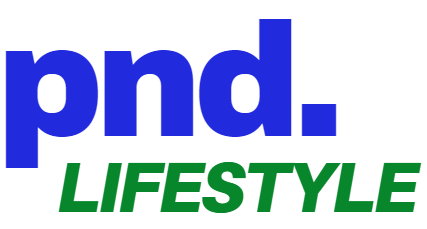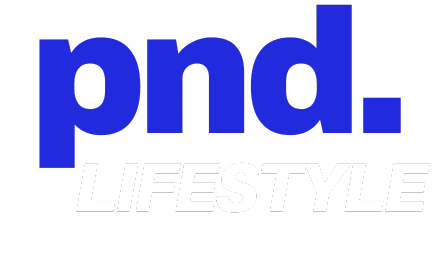4 Key Components of a Successful Content Calendar: Essential Elements for Strategic Planning

A content calendar is an essential tool for organizing and scheduling your marketing efforts.
It helps you plan, create, and publish content consistently across various platforms. By using a content calendar, you ensure that your team stays on track, maintains a steady flow of posts, and keeps your audience engaged.

Creating a successful content calendar may seem daunting, but with the right components, it can streamline your content strategy.
You will be better equipped to manage deadlines, collaborate efficiently, and measure your marketing performance.
1) Editorial Calendar
An editorial calendar is a crucial tool for planning your content.
It helps you organize what content to publish and when to publish it.
This visual workflow includes all types of content, such as blog posts and social media updates.
Using an editorial calendar, you can see your entire content plan at a glance.
This makes it easier to manage deadlines and coordinate with your team.
Each team member knows their responsibilities and the publication dates.
Editorial calendars often include key details.
These details might be content ideas, keywords, assigned authors, and publishing times.
Having these elements in one place reduces confusion and increases productivity.
Many teams use editorial calendars to streamline their content creation process.
This not only saves time but also ensures consistency in posting.
Consistency helps build a loyal audience over time.
An effective editorial calendar also integrates promotional channels.
You can plan how and where to share your content to maximize reach.
For example, you might plan SEO content alongside social media efforts.
It’s important to review and update your calendar regularly.
This allows you to stay on track with your goals and adapt to any changes.
Regular updates help keep your content relevant and timely.
Using an editorial calendar is essential for a successful content strategy.
It serves as your content blueprint, guiding your efforts and ensuring nothing falls through the cracks.
For more information, you can read about creating an editorial calendar.
2) Content Strategy
Your content strategy forms the backbone of your content calendar.
It guides what you publish, when you publish it, and why.
Aligning your content with your business goals helps ensure you are meeting your targets.
Identify key themes and topics that resonate with your audience.
This ensures your content remains relevant and engaging.
Focusing on these themes will help you build a loyal readership.
Content strategy should also focus on the types of content you need.
This could be blog posts, videos, infographics, or social media updates.
Diversifying your content keeps your audience engaged and reaches them on multiple platforms.
Clear goals and metrics are crucial in evaluating your content’s success.
By tracking key performance indicators (KPIs), such as page views, engagement, and conversion rates, you can measure what works and what doesn’t.
A solid content strategy can help you connect with your audience more effectively.
For a deeper look into creating a content strategy, you can explore this 6-Step Guide to Building a Content Strategy.
Make sure to include a content calendar in your strategy.
It helps you plan, organize, and schedule your content, ensuring consistency and relevancy.
Learn more about how a well-managed content calendar can boost your strategy here.
Combining content strategy with a content calendar helps distribute your content evenly over time, ensuring your audience receives new updates regularly.
This balance keeps your content fresh and your audience always coming back for more.
3) Topic Clusters
Topic clusters are essential for organizing your content.
They help improve your site’s SEO and make your material more accessible to readers.
By grouping related content around a central topic, you can create a structured and user-friendly experience.
Start by identifying a core topic.
This will be your main pillar page.
For example, if you run a fitness blog, a core topic could be “Healthy Eating.”
Next, create cluster pages.
These are subtopics related to your core topic.
Using the fitness blog example, related subtopics could include “Meal Planning,” “Nutrient-Rich Foods,” and “Healthy Recipes.”
Each cluster page should link back to the pillar page and among themselves.
This internal linking helps search engines understand the relationship between different pieces of content, boosting your SEO.
Creating a topic cluster also allows you to cover a subject in depth.
Instead of writing one long, comprehensive article, you can break it down into manageable pieces that still provide a thorough coverage of the topic.
Tools like Ahrefs and Semrush offer guides on creating topic clusters.
These tools can help you find related keywords and topics, making the process easier and more effective.
Incorporate an enhanced content audit to review existing material.
This can identify gaps where new cluster pages can be added, ensuring that all aspects of your core topic are covered.
For more details on how to execute this, visit Comprehensive Guide.
By implementing topic clusters, you’ll not only enhance your site’s SEO but also provide your readers with a richer, more organized experience.
This approach helps establish your authority on the topic, making your content more relevant and useful.
4) Key Performance Indicators (KPIs)
Key Performance Indicators (KPIs) are essential for tracking the success of your content calendar.
KPIs help you measure if your content is meeting your goals.
Common KPIs to track include engagement metrics like likes, comments, and shares.
These show how much your audience is interacting with your content.
Conversion metrics, such as sign-ups and purchases, tell you if your content is driving desired actions.
These are critical for understanding the financial impact of your content.
Audience reach metrics measure how many people see your content.
This includes impressions and unique views, helping you know if you’re expanding your audience.
Content performance metrics like time on page and bounce rate provide insights into how engaging your content is.
These KPIs help you improve content quality.
It’s crucial to select KPIs that align with your specific goals.
For example, if you aim to increase brand awareness, focus on reach and engagement metrics.
Always use data from your KPIs to refine your content strategy.
Regularly reviewing these metrics ensures your content calendar remains effective.
For more on different types of KPIs, see this guide.
Make sure to track a balanced mix of KPIs to get a complete picture of your content’s performance.
Avoid relying solely on one type of metric.
This will give you a more accurate measure of success.
Reviewing your KPIs regularly helps you stay on track and adjust your strategy as needed.
Keep your content calendar aligned with your business objectives by focusing on these key metrics.
Defining the Core Elements

To create a successful content calendar, you need to focus on identifying your target audience and choosing the right content types and formats.
These elements ensure that your content is relevant and engaging.
Understanding Target Audience
Knowing your target audience is crucial.
Start by defining who you are trying to reach.
This involves identifying their age, gender, interests, and pain points.
You can use tools like surveys, questionnaires, and analytics to gather this data.
Creating audience personas can help visualize your target groups.
These personas should include details like demographics, behaviors, and preferences.
Understanding your audience will guide you in creating content that resonates with them.
For example, if your audience consists mainly of young adults, you might focus on social media platforms and trending topics.
Tailor your content strategy to meet the specific needs and interests of your audience.
Content Types and Formats
Choosing the right content type and format is essential.
You should think about what kinds of content will engage your audience the most.
Some common types include blog posts, videos, social media updates, newsletters, and infographics.
Each format has its strengths.
For instance, blog posts are great for detailed information, while videos can be more engaging.
Social media updates are perfect for quick, timely content.
Mixing different formats can keep your audience interested and provide various ways to consume your content.
Also, consider seasonal trends and events.
Aligning your content with these can increase its relevance.
Your content calendar should map out the various formats and types you’ll use to maintain a consistent and engaging strategy.
For a well-rounded plan, make sure to diversify your content types and adapt to what’s most effective for your audience.
Establishing a Workflow

Effective content calendars rely on a well-defined workflow that outlines who does what and which tools to use.
Assign clear roles and responsibilities, and choose the right editorial calendar tools to ensure smooth operation.
Roles and Responsibilities
Clearly defining roles and responsibilities is crucial for a successful content calendar.
Each team member needs to know their specific tasks and how they fit into the larger picture.
Assign roles such as content creator, editor, designer, and social media manager.
This helps in avoiding confusion and ensures accountability.
For example, a content creator focuses on producing the content, while an editor reviews and approves it.
A designer adds visual elements, and a social media manager schedules posts and tracks engagement.
By assigning these roles, you streamline the process and improve efficiency.
Editorial Calendar Tools
Choosing the right tools can make or break your content workflow.
Tools like Sprout Social’s content calendar or Backlinko’s calendar template can help you organize and manage tasks effectively.
These tools offer features like task assignment, deadlines, and progress tracking.
Sprout Social provides a comprehensive dashboard for planning and collaboration, while Backlinko offers customizable templates that can be tailored to your needs.
Pick tools that allow easy integration with other platforms your team uses.
This makes it easier to keep everything in one place and track progress.






